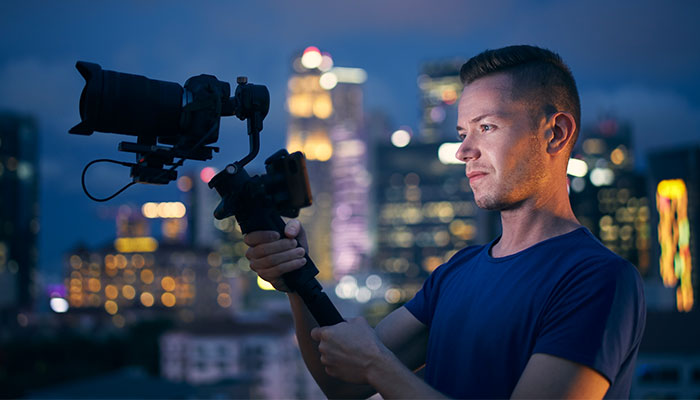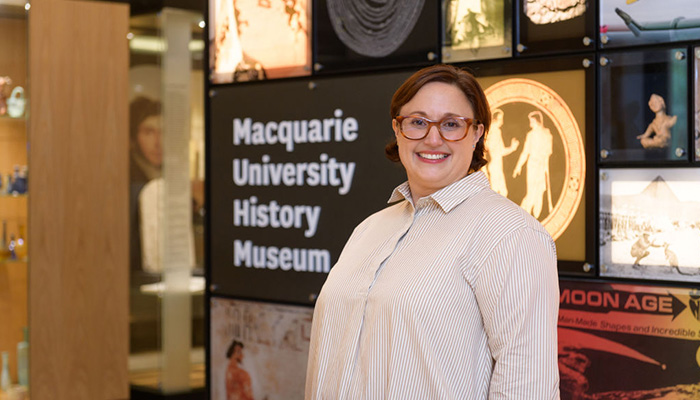Look up on a clear night and marvel at what you see. The Macquarie University Astronomical Observatory unlocks a treasure trove of stars, planets, moons and far galaxies to university students and staff, as well as members of the public. Few other universities in Sydney have such a facility on-campus.
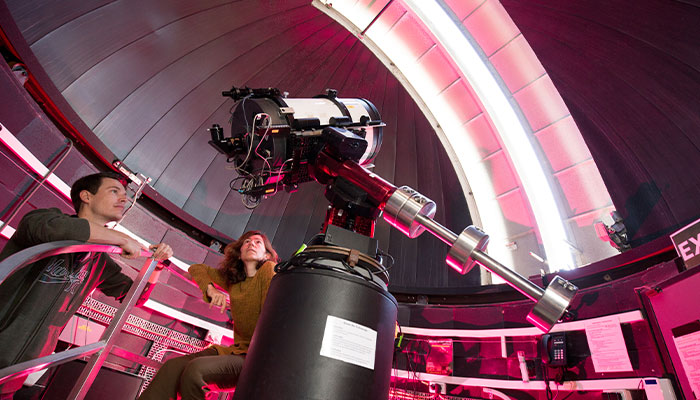
Heavens above: PhD student Tobias Feger and Professor Orsola De Marco in the Astronomical Observatory.
Macquarie’s observatory is located on the far north-eastern corner of the campus. It includes two domes that each house a telescope and newly built astronomy research, teaching and lab facilities, and a control room.
Last year, the university also bought a new 24-inch (.6 metre) research-grade robotic telescope which is fixed inside one of the domes
“The new telescope can be remotely operated,” says Professor Orsola De Marco of the Department of Physics and Astronomy.
They learn how to set up and operate all the telescopes, they’re trained on how to interact with the public, safety and how to present the science.
“So we, the operators, can literally be anywhere. It’s also connected by optical fibre to a spectrograph that can measure very precise motions of the planets so we can estimate their mass and other parameters. We also use the telescope to take amazing photos.”
De Marco describes how when the robotic telescope arrived on campus from the US, she and her colleagues puzzled how to move the 150kg piece of delicate equipment into place. Eventually, they hired a crane to lower it into the dome. “We had some moments of sweat there,” she says.
The observatory also has a dozen other moveable telescopes of varying dimensions that are moved around the site and can be taken out to schools and rural communities.
Special training for first-year students
Students who choose an Astronomy major in a Bachelor of Science degree, as well as others doing PhDs and Higher Degree Research, get to use the observatory facilities regularly for learning and research.
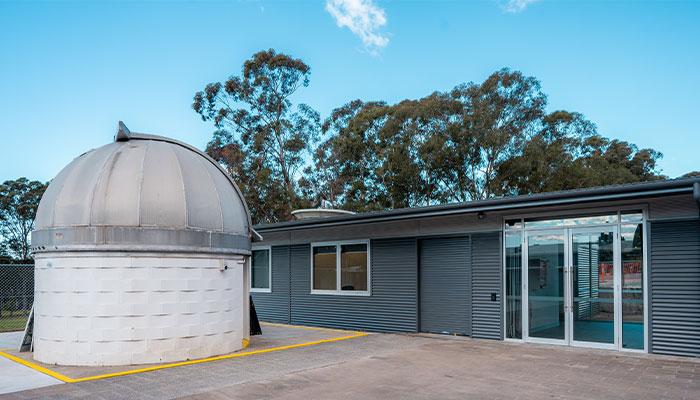
Sky highs: One of the two domes housing telescopes at the observatory, which is located in the campus's north-eastern corner.
Any student with an interest in astronomy is encouraged to join the university’s Association for Astronomy, which holds educational regular seminars and other activities. The first-year students also receive special training so they can run the observatory’s outreach program.
“They can get their hands dirty right away,” De Marco says. “They learn how to set up and operate all the telescopes, they’re trained on how to interact with the public, safety and how to present the science. It’s an amazing opportunity to become science communicators and also help with research.”
This involves leading school holiday programs as well as school and scout groups visiting the observatory. Friday and Saturday nights are open to the public, which is a chance for students not studying astronomy to use the telescopes to explore the sky.
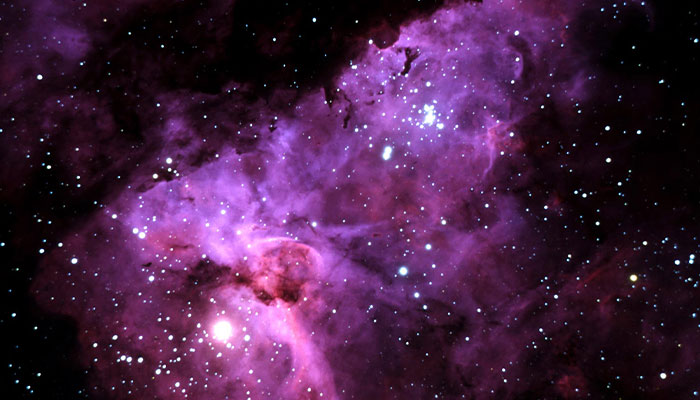
Far, far away: The Carina Nebula, about 8500 light years from Earth, as seen from the Observatory. Picture: Andrew Lehmann
On special astronomical events, such as when Earth and Mars are on the same side of the Sun, the observatory attracts large crowds of people, De Marco says. And every year in spring, they hold an Observatory Open Night which more than 2000 people attend.
The Observatory has a portable planetarium that fits 40 people, and students use specially designed projectors to give people a chance to see the surface of planets, nebulas and other celestial phenomena.
The AfA students have taken this planetarium to regional areas of NSW, to bring the wonders of the universe to under-served communities and also encourage young people to study science.
“We’re attracting students to study astronomy not just to become an astronomer, but to become a problem solver, something that is valued in diverse careers from data science to the space industry to actually any industry requiring critical thinking,” says De Marco.


